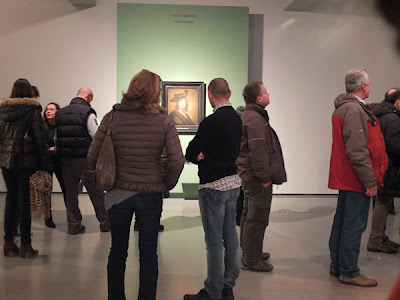
Welcome! See Italy (and more) through the eyes of an artist: American sculptor and painter Kelly Borsheim creates her life and art in Italy and shares her adventures in travel and art with you. Come on along, please and Visit her fine art work online at: www.BorsheimArts.com
Friday, December 21, 2012
Hendrick van Vliet Rome Italy
Wednesday, December 19, 2012
Vermeer Exhibition Rome Italy
This painting of the girl in the red hat by Johannes Vermeer is the one that is being used on all the publicity. It is quite beautiful with a wonderful use of color and, of course, light. But I had not expected it to be so small, perhaps 8 x 6 inches? It is no surprise that the qualities that I enjoyed about the Vermeers were the soft edges, atmosphere, and the dramatically soft light.
Here are some lovely large images from the Vermeer exhibit, including a study that Vermeer did from a Florentine artist. It is interesting to see the changes that he made to the original: https://art4arte.wordpress.com/tag/jan-van-der-heyden/
Buon compleanno, Roberto! Your enthusiasm is contagious and pure.
P.S. These latter images are some of the views I had while inside the Quirinale in Roma, Italy.
Tuesday, December 18, 2012
Bone Crypt of Friars Cappuccini Rome Italy
Visit the Crypt in Rome, Italy:
La Cripta dei Cappuccini
Chiesa dell'Immacolata in via V. Veneto, 27
Convento dei frati cappuccini – Roma
Here is another link with a cool image of the crypt..
P.S. On a happier note, I recently successfully applied to renew my “Permesso di Soggiorno” (permission to stay in Italy for another year). This was only one step, but I now have an appointment with the Questura (Italian immigration police) in January. So, I can legally spend the holidays here and am already painting on several things and happy about it.

























